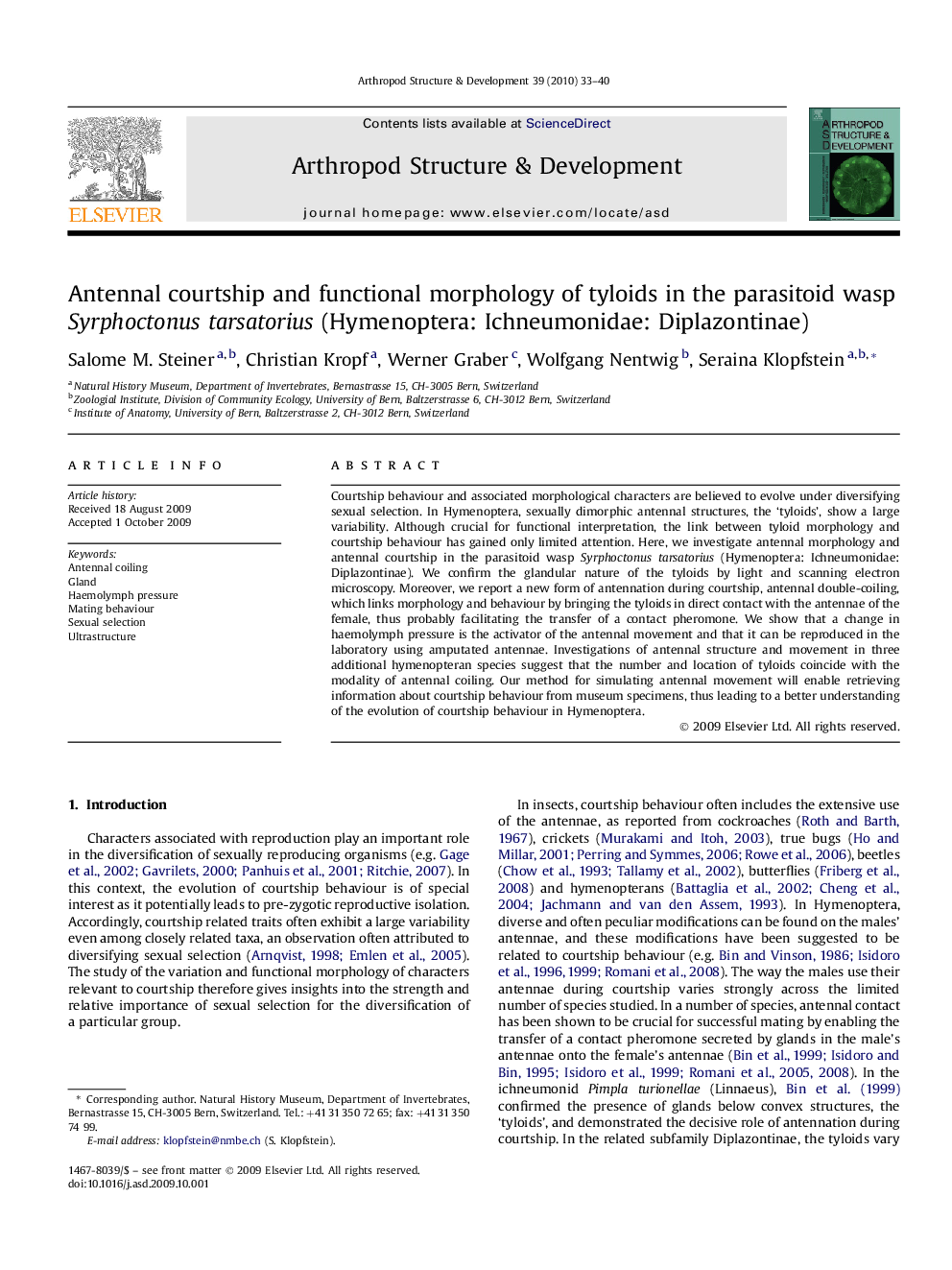| Article ID | Journal | Published Year | Pages | File Type |
|---|---|---|---|---|
| 2778967 | Arthropod Structure & Development | 2010 | 8 Pages |
Courtship behaviour and associated morphological characters are believed to evolve under diversifying sexual selection. In Hymenoptera, sexually dimorphic antennal structures, the ‘tyloids’, show a large variability. Although crucial for functional interpretation, the link between tyloid morphology and courtship behaviour has gained only limited attention. Here, we investigate antennal morphology and antennal courtship in the parasitoid wasp Syrphoctonus tarsatorius (Hymenoptera: Ichneumonidae: Diplazontinae). We confirm the glandular nature of the tyloids by light and scanning electron microscopy. Moreover, we report a new form of antennation during courtship, antennal double-coiling, which links morphology and behaviour by bringing the tyloids in direct contact with the antennae of the female, thus probably facilitating the transfer of a contact pheromone. We show that a change in haemolymph pressure is the activator of the antennal movement and that it can be reproduced in the laboratory using amputated antennae. Investigations of antennal structure and movement in three additional hymenopteran species suggest that the number and location of tyloids coincide with the modality of antennal coiling. Our method for simulating antennal movement will enable retrieving information about courtship behaviour from museum specimens, thus leading to a better understanding of the evolution of courtship behaviour in Hymenoptera.
